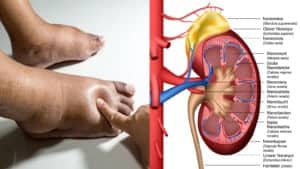Have you seen the alarming headlines about children with lead poisoning in various communities like Memphis and Flint? Do you live in an old house that might have lead paint in it somewhere? Or, are you afraid of the purity of your tap water?
These are serious considerations since any level of exposure to lead during your child’s early years. That’s because lead poisoning can permanently damage your child’s brain and kidneys. Here we will discuss the most common sources of lead exposure. Additionally, we’ll review the signs that your child has lead poisoning and discuss prevention.
Signs and symptoms of lead poisoning
Unfortunately, children don’t exhibit symptoms until the lead poisoning advances far. In most cases of lead poisoning, the ongoing exposure causes the child’s body to accumulate increasing amounts of lead gradually. The human body has no natural means for removing lead. Thus, any lead that we consume or inhaled remains in the body.
Acute symptoms of lead poisoning include:
- Vomiting and abdominal pain
- Jaundice
- Lethargy
- Black diarrhea
- Seizures
Hints of ongoing chronic lead poisoning include:
- Abnormally slow growth
- Weight loss
- Loss of appetite
- Mild abdominal pain
- Constipation
- Irritability
- Fatigue
- Bluish tinge around the gums
- Impaired cognitive function
The American Academy of Pediatrics recommends testing a blood sample from all children at ages one and two years to ensure the blood lead levels are not elevated even in the absence of symptoms.
If you don’t detect the exposure and seek treatment, the child can suffer from permanent damage to all organs in the body. As the condition worsens, the child will progress to seizures, enter a coma, and could even die.
Sources of lead
Lead-based paint is the primary source of lead in a child’s environment. The US government banned lead-based paints in 1978. However, many older houses and buildings contained it before that ban. Chips and flakes of lead paint can end up on the floor, where a curious infant or toddler can eat them.
In addition, lead paint dust can accumulate on the floor and be inhaled by a young child. The process of preparing surfaces to be repainted often involves sanding away the existing paint. If there is any lead paint present, a considerable amount of lead-contaminated dust can release into the house.
Lead can also be found in some imported goods, like toys, jewelry, cosmetics, candy wrappers, and ceramics. Some tea kettles and vinyl mini-blinds are also contaminated with lead. In addition, in some cases, drinking water can become contaminated with lead. That happens if lead leaches into the water from old lead pipes, solder, brass fixtures, or valves.
Contaminated folk medicine
Another source of lead is traditional or folk medicines. Among the Hispanic community, the remedies azarcon and greta used to treat an upset stomach, contain reasonably large amounts of lead. Besides, many traditional Chinese medicine preparations are contaminated with heavy metals like cadmium, arsenic, and lead.
Lead poisoning and the workplace
Some adults deal with lead exposure while at work. These employees primarily work in facilities that manufacture batteries or work as house painters who prepare walls that were previously painted with lead-based paint. However, they can bring home lead dust on their clothing. And that inadvertently contaminates the house.
Lead in “hobby” materials of the parents
Also, individuals participate in hobbies that involve lead. For example, those who patronize indoor firing ranges or make their lead bullets can also accidentally contaminate their house with lead. Artists who use lead-white paint need to ensure children can’t get hold of it and eat it.
Treatment of Lead Poisoning
Doctors often tread children found to have significant levels of lead in their blood can be treated with chelation therapy. This can be administered either by mouth or by intravenous infusion. Chelation therapy uses compounds that naturally bind to the lead, and then they, along with the lead, are excreted in the urine. Compounds approved for use in chelation therapy in the US include succimer, dimercaprol (BAL), edetate calcium disodium (EDTA), deferoxamine, and penicillamine.
Unfortunately, chelation therapy can have significant side effects and also strips the body of other compounds, like calcium, that is essential for life. Succimer and BAL are taken orally and are the first-line approach to treating a child since they have fewer dangerous side effects than the other compounds. EDTA can cause kidney damage, deferoxamine can cause lung damage and dangerously low blood pressure, and penicillamine can trigger life-threatening allergic reactions.
Because of the dangers of chelation therapy, it should not be used for any other purpose than removing high levels of heavy metals from the body proven to be present by blood tests. Some unscrupulous individuals suggest getting regular chelation therapy as part of a “detox” or as a way to prevent heart disease and dementia. However, it does not prove useful for these purposes and may well end up causing significant harm or even death.
Cilantro
Some researchers proved in animal studies that consuming cilantro can help in removing lead and other heavy metals from the body. This may be a good option for a child who has some lead in the bloodstream but not enough to risk the potential side effects of chelation therapy.
In addition, unless the child is a cilantro eater, it should be quite easy to increase the amount of cilantro the child eats. It can be added to a wide range of soups, salsas, and main dishes. Some people like it so much they snack on it raw.

Find the source of lead poisoning and remove it
However, in addition to removing the lead from the child’s body, it is essential to identify the source of the lead and remove it from the home. Otherwise, the child will become poisoned again. In some cases, the cause is obvious, but in other cases, an extensive investigation needs to be performed. If the source is found to be the water supply in the house, expensive plumbing work may need to be undertaken. e.g., kitchen plumbing services. If it is lead paint, a trained expert should be brought in to either remove it thoroughly or seal it off. You may call Plumbing Tree for your home plumbing or visit sites like https://macvik.com/ to hire a professional to check.
Neuroplasticity
If the child has already suffered some minor brain damage from lead exposure, it may reverse itself. The brains of children are very adaptable and are still growing and developing, and new neural pathways can form to correct the deficit. In addition, supplements like gingko and fish oil can improve brain health, and playing brain training games can significantly improve cognitive skills.
Brain training games are played like video games and improve memory and cognitive functioning. You will find plenty of these online–both as free downloads or to purchase. You’ve probably heard of Lumosity, the best-known brand. They offer games proven to increase brain processing speed, improve memory, heighten focus and attention, and improve mental flexibility. They also provide videos that assist with developing better math and word skills.
Keep an eye on the kidneys
Lead exposure can also cause kidney damage. Kidney damage is harder to spot than cognitive impairment. Some signs of kidney damage include:
- Dry, itchy skin
- Puffy eyes
- Muscle cramps
- Fatigue
If your pediatrician issues a diagnosis of high levels of lead, ask them to test your child’s kidney function, also. They will collect urine and blood samples to diagnose.

Prevention of lead poisoning is the key
Thus, the best approach is prevention. Before you start a family, carefully inspect the house for any possible signs of lead-based paint and remedy the situation. Test the water for lead. Many communities offer free water testing, and if yours does not, an independent laboratory can conduct the test for you. Finally, think about other ways you may be introducing lead into your environment.
After you bring your baby home, follow the recommendation to take a blood sample, and have it tested for lead at ages one and two. If you do see any of the signs and symptoms described in this article, immediately take your child for testing and treatment.
Final thoughts on Detecting Lead Poisoning in Your Child
The human body has no use for lead, and exposure to lead can cause significant health problems and even death. However, infants and toddlers are uniquely vulnerable to lead. They can obtain it from many possible sources around the home, and when it builds up in the child’s body, it can cause damage to all parts of the body, in particular, the brain.
If you do not catch and treat lead poisoning early on, the child may develop the following:
- Learning impairments
- Reduced cognitive function
- Behavioral abnormalities.
Unfortunately, you’ll see very few early signs and symptoms that the child has lead poisoning. That’s because they only tend to occur after significant amounts of lead build up in the body and are rather non-specific.















 Community
Community

